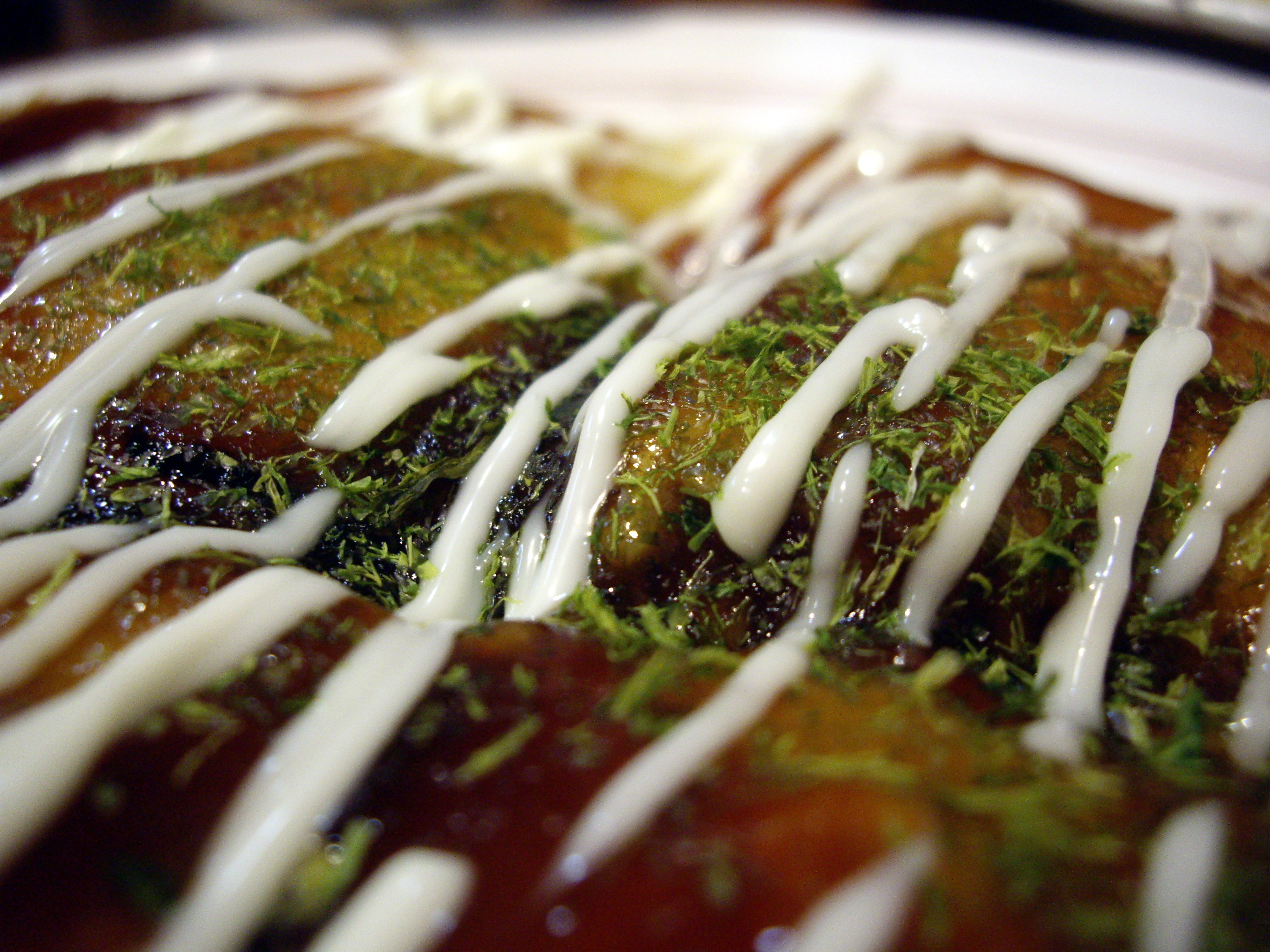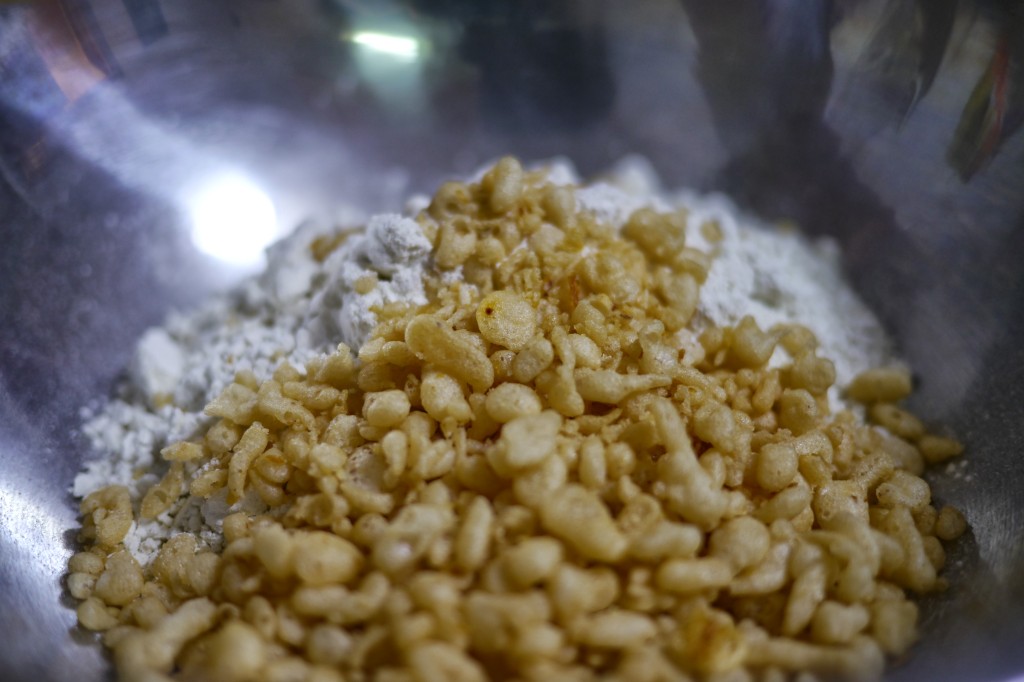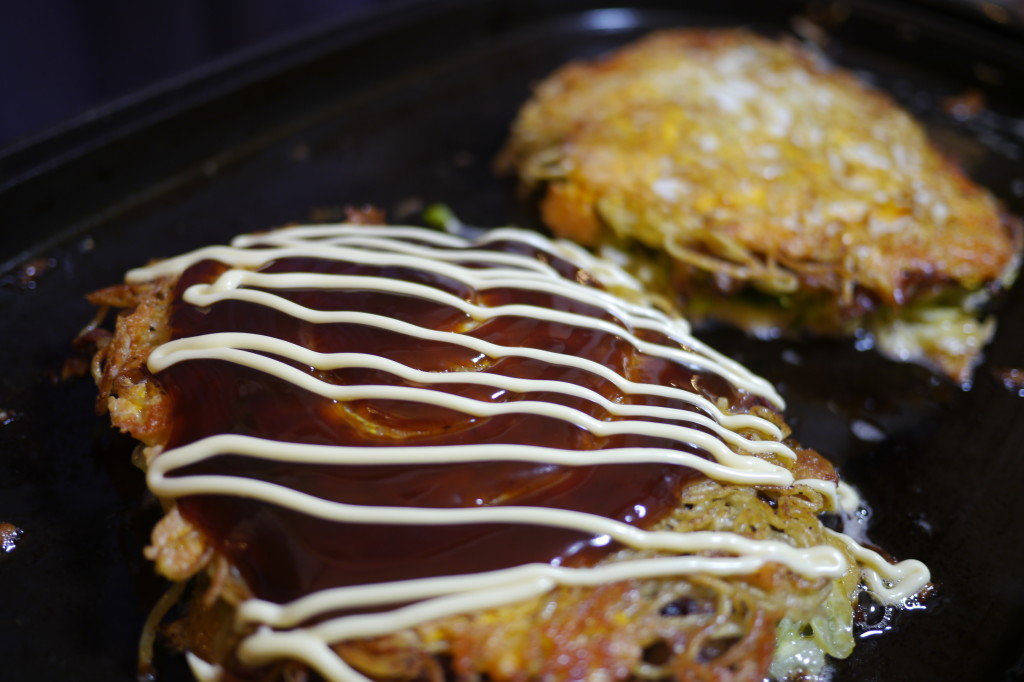Okonomiyaki is a popular teppan-grilled Japanese food especially in Western Japan. There are two main styles of okonomiyaki: Osaka/Kansai style and Hiroshima style but even within those regions, it can vary a lot from shop to shop and family to family. It is the kind of food where you are encouraged to pick your favourite “toppings” and in that respect it is often referred to as cross between pancakes and pizza with a distinctly Japanese flair.
The main difference between this Hiroshima style and Osaka style is that Hiroshima style is layered including soba noodles where Osaka style is mostly mixed in a bowl (although there’s a variation called Modanyaki or ModernYaki or モダン焼き layers soba noodles on top of Osaka style Okonomiyaki).
The “okonomi” in okonomiyaki roughly means that it’s whatever you like it to be so you can choose your favourite toppings including squid, octopus, kimchi, beef suji (tendon), bacon, shrimp, dried shrimp, mentaiko, mochi & cheese, corn, bean sprouts, spinach, garlic, spring onions, peppers, mushrooms, eggplant, zucchini, carrots, corn, and so on.
INGREDIENTS/ (Portioned for 2 people)
- Dashi Soup base, 160mL or so
- Egg x3
- Okonomiyaki Mix, 100g if available, otherwise mix about 95g of Flour, big pinch of salt, about 6 grams of baking powder (okonomiyaki mix usually has a bunch of stuff in it including dashi powder so it can be mixed with water instead of dashi)
- Yamaimo Mountain Potato, powder or grated; this is optional to make is thicker yet fluffier. You can use Yam starch, Potato starch as an alternative
- 天かす Tenkasu (deep fried flour puffs with squid flavouring)
- Pork, thinly sliced strips
- Green Ao Negi, 000g; alternatively, you can use green onions, spring onions, or scallion onions
- Cabbage, 1/4 to 1/2 of a medium-sized and chopped; typically in Hiroshima style you use A LOT of cabbage — far more than in Osaka style
- 中華そば Chinese-type Wheat-flour Soba Noodles (not to be confused with Japanese Buckwheat Soba noodles), 2 packs; you can use chow mein noodles here or, in a pinch, ramen noodles
- Grated Cheese (or any other toppings you may want such as kimchi, etc.)
- Okonomiyaki Sauce
- Mayo (Japanese style mayonnaise)
- Katsuoboshi Bonito Flakes
- Nori Seaweed Flakes
TOOLS/
- Teppan Grill (although you can just use frying pan if you don’t have a grill)
- Flat edged teppan grill tool (egg flippers work fine too)
- Mixing Bowl and mixing tool such as a whisk
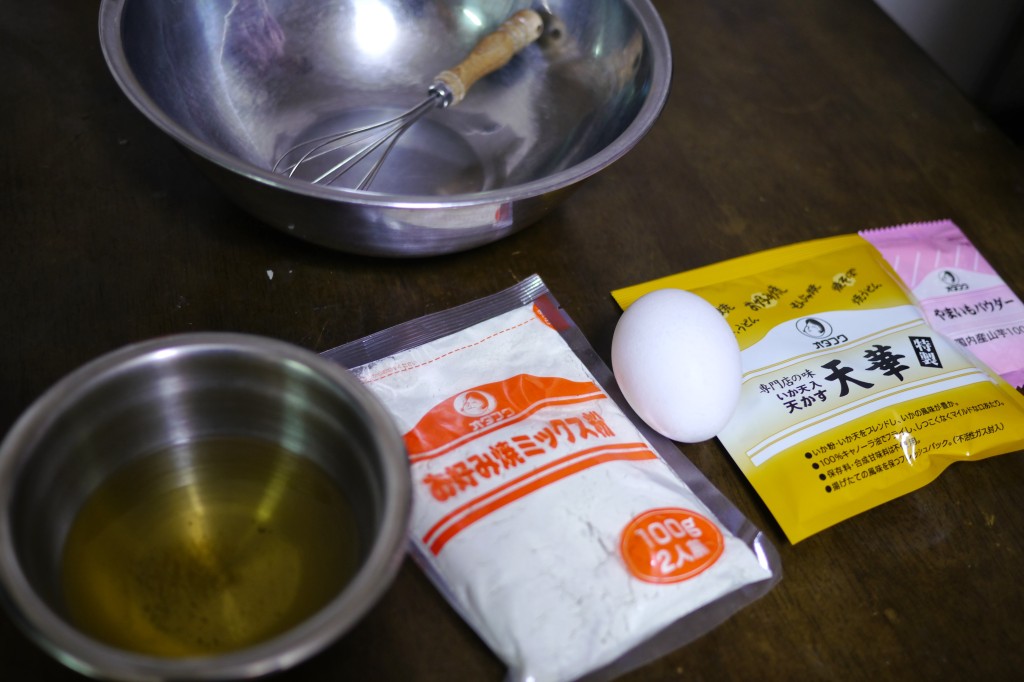 To start making the okonomiyaki batter, you are going to need a mixing bowl and something to mix it with like wisk. Here we have also prepared the dashi, the okonomiyaki mix, 1 of the 3 eggs, tensukasu, and some optional yamaimo mountain potato powder
To start making the okonomiyaki batter, you are going to need a mixing bowl and something to mix it with like wisk. Here we have also prepared the dashi, the okonomiyaki mix, 1 of the 3 eggs, tensukasu, and some optional yamaimo mountain potato powder
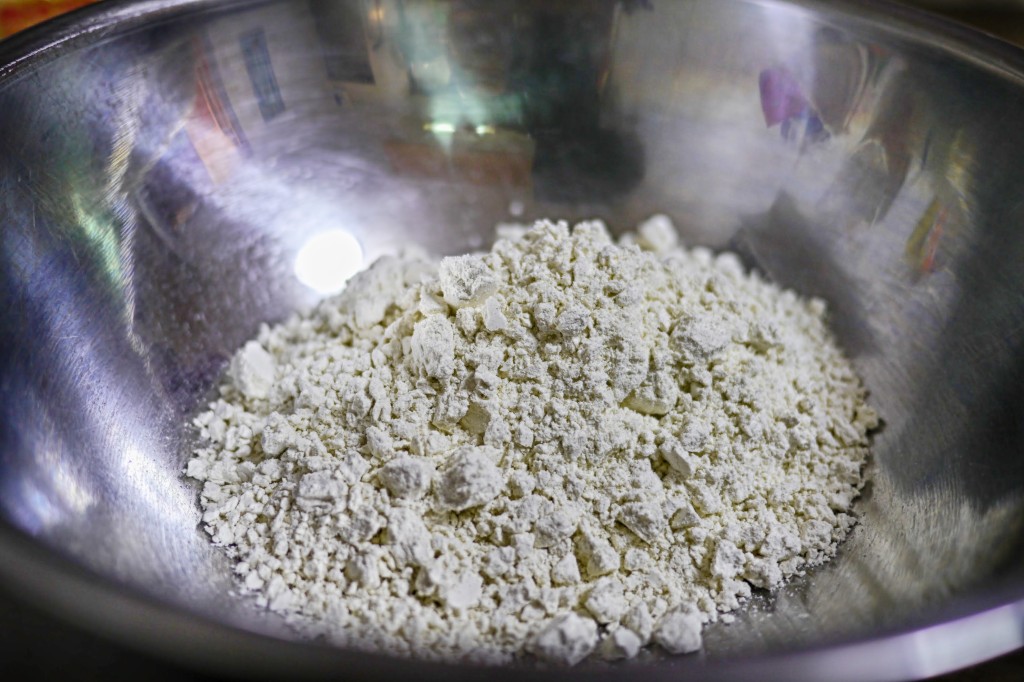 Add the okonomiyaki mix and yamaimo mountain potato powder to the bowl. If you are not using pre-made mix, then mix all the powders together
Add the okonomiyaki mix and yamaimo mountain potato powder to the bowl. If you are not using pre-made mix, then mix all the powders together
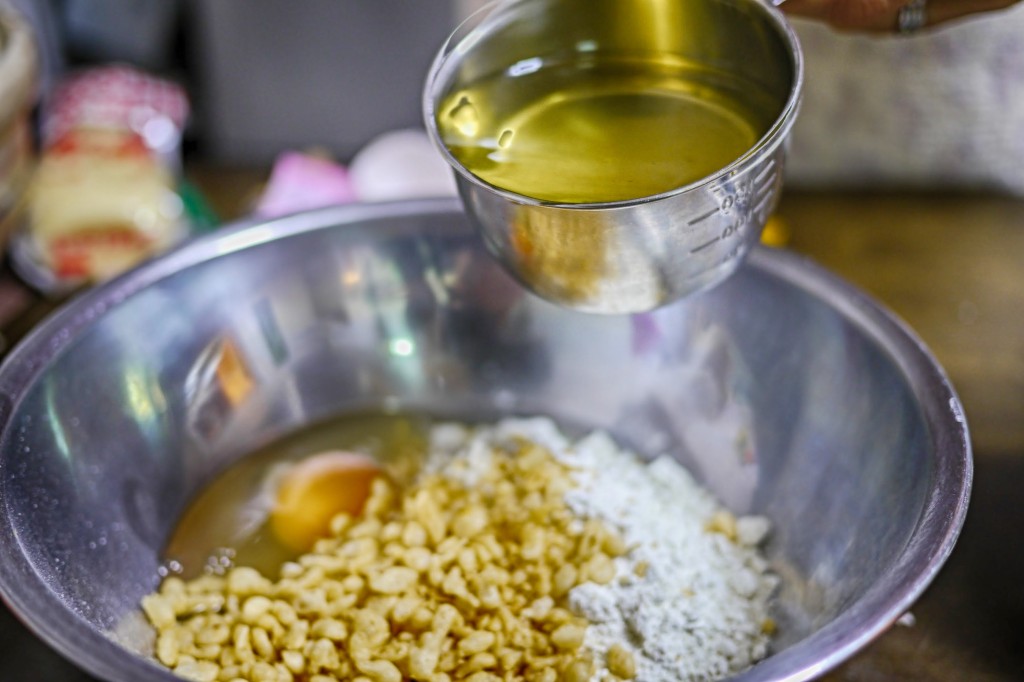 Add 1 egg as well as your dashi soup stock
Add 1 egg as well as your dashi soup stock
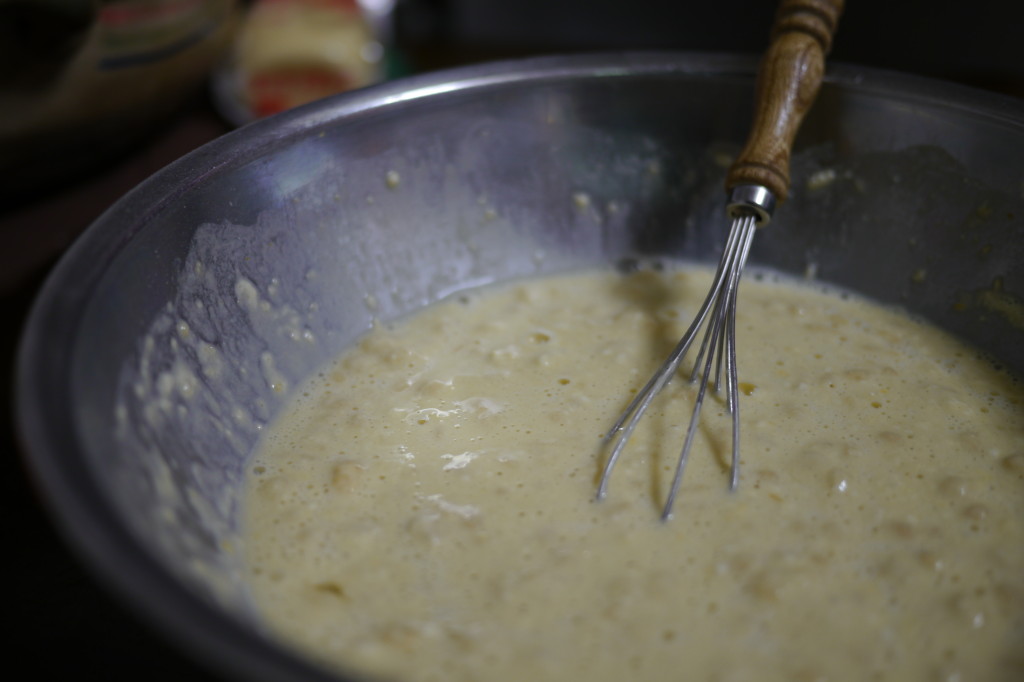 Mix until all combined together. You can try to make it smooth but it doesn’t have to be perfect
Mix until all combined together. You can try to make it smooth but it doesn’t have to be perfect
 For the grilling portion (or frying if you are doing this in a frying pan), prepare your chopped negi, chopped cabbage, okonomiyaki batter, soba noodles, 2 more eggs, thinly sliced meat, and any other toppings you want (I added cheese to my topping list)
For the grilling portion (or frying if you are doing this in a frying pan), prepare your chopped negi, chopped cabbage, okonomiyaki batter, soba noodles, 2 more eggs, thinly sliced meat, and any other toppings you want (I added cheese to my topping list)
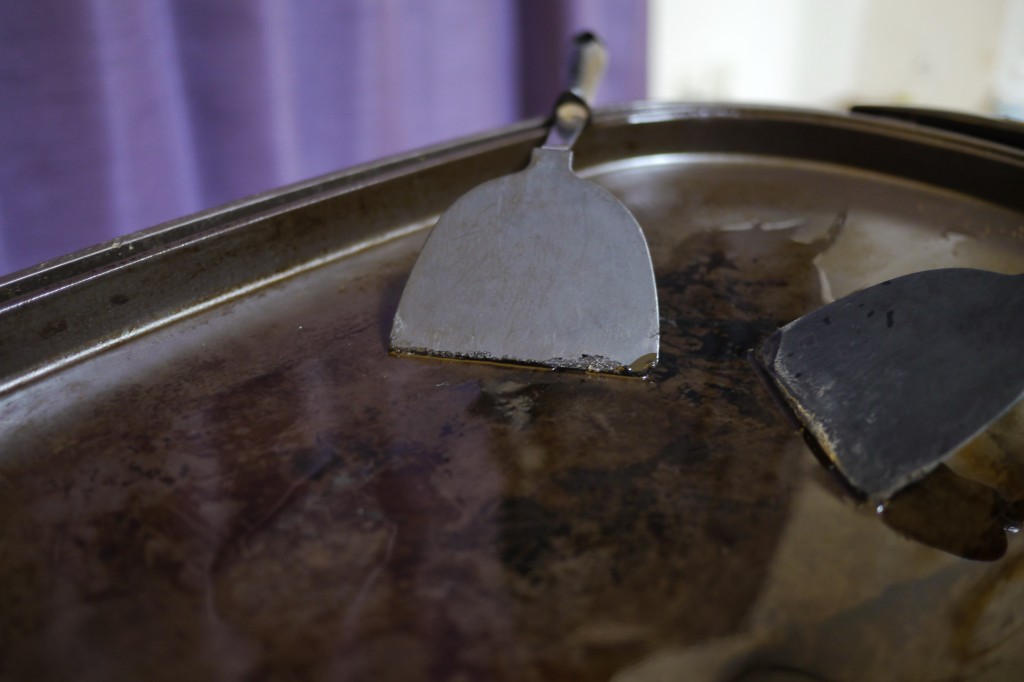 Spread a little bit of oil on your teppan grill or frying pan at medium heat
Spread a little bit of oil on your teppan grill or frying pan at medium heat
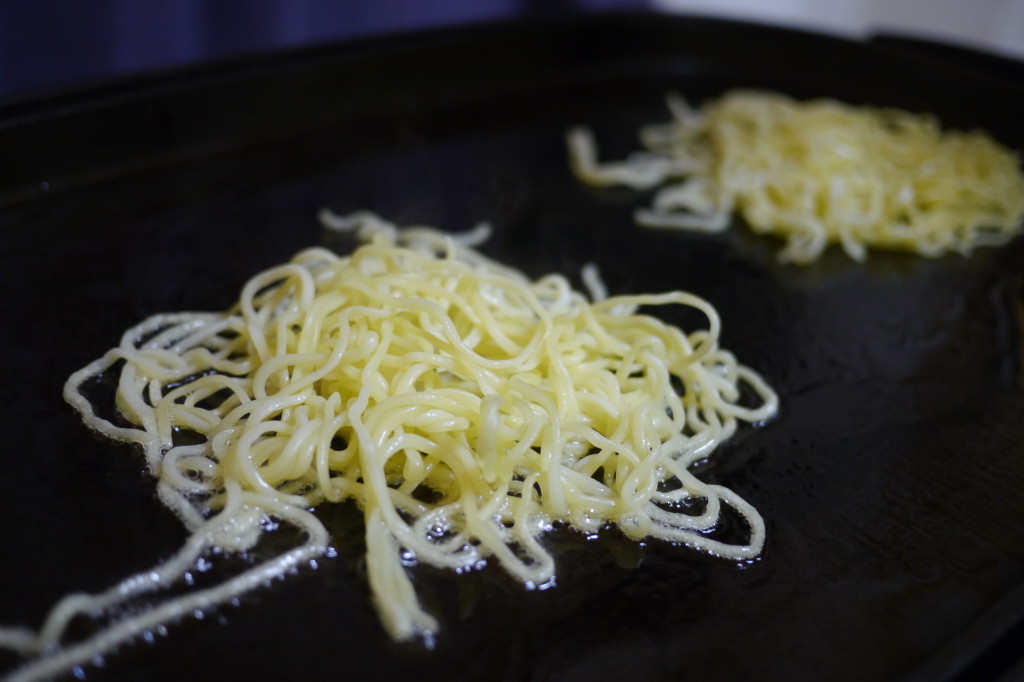 Grill/fry the soba. Since we are making 2 okonomiyaki, you can separate the 2 portions of soba noodles if you like. (Some people like to add some water to the soba here to help it separate. Some people also like to add a little bit of okonomiyaki sauce or yakisoba sauce here for extra flavouring)
Grill/fry the soba. Since we are making 2 okonomiyaki, you can separate the 2 portions of soba noodles if you like. (Some people like to add some water to the soba here to help it separate. Some people also like to add a little bit of okonomiyaki sauce or yakisoba sauce here for extra flavouring)
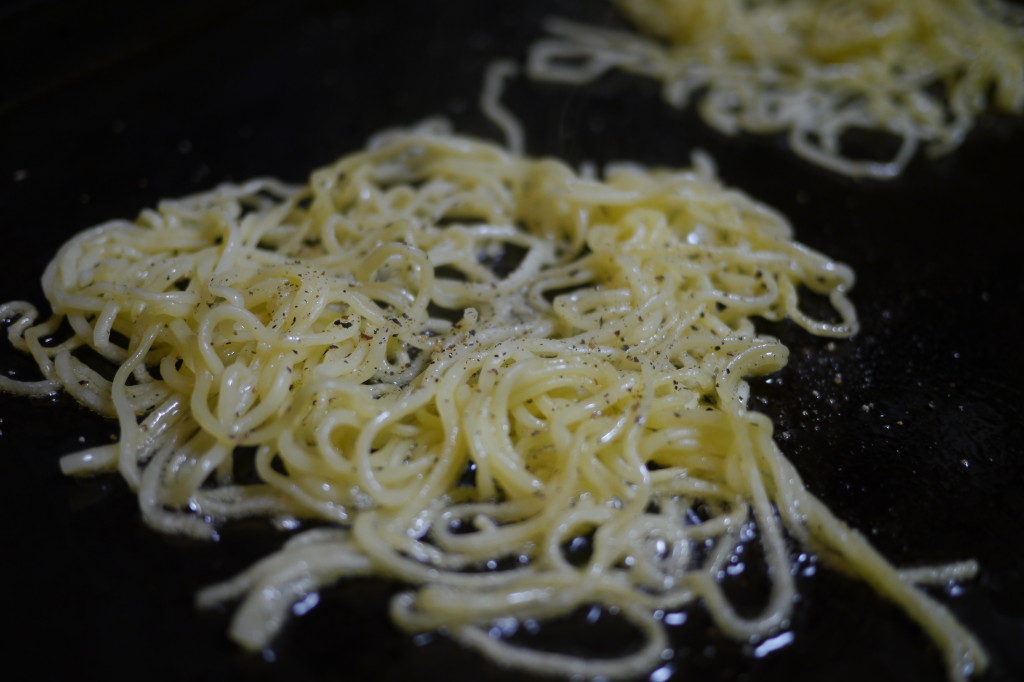 Add some ground pepper (optionally some ground salt as well) and continue grilling/frying
Add some ground pepper (optionally some ground salt as well) and continue grilling/frying
 Once grilled/fried (cook it so it’s not hard and can still bend), set it aside. If are cooking it in two portions, you may want to keep those portions separate to make it easier later
Once grilled/fried (cook it so it’s not hard and can still bend), set it aside. If are cooking it in two portions, you may want to keep those portions separate to make it easier later
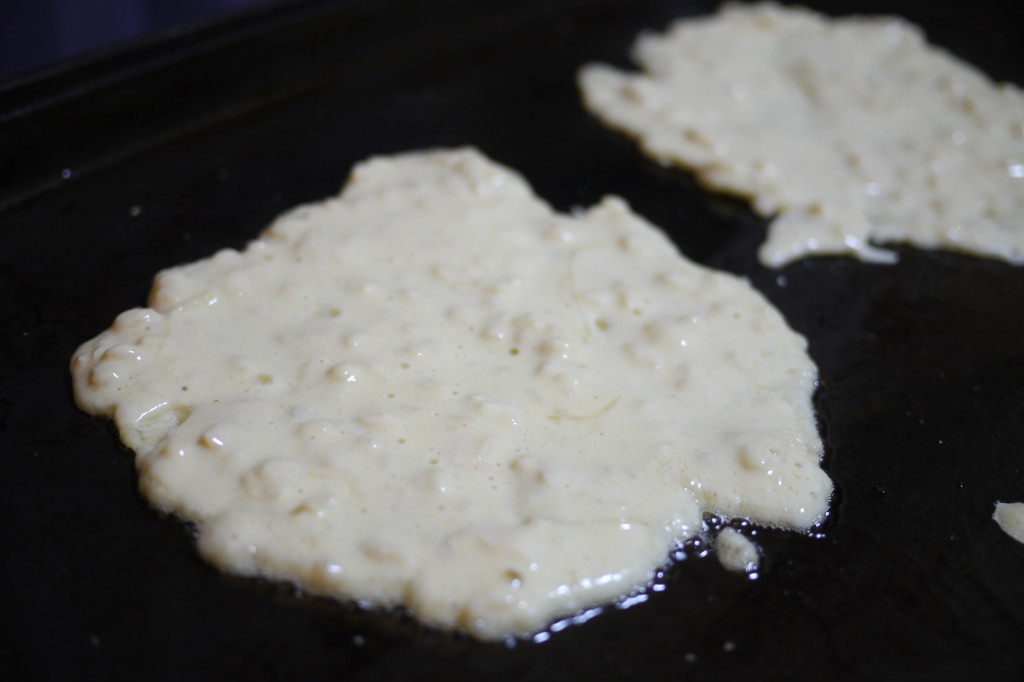 Pour the batter on the grill/pan like making 2 pancakes. The shape should be generally round, but it doesn’t have to be perfect
Pour the batter on the grill/pan like making 2 pancakes. The shape should be generally round, but it doesn’t have to be perfect
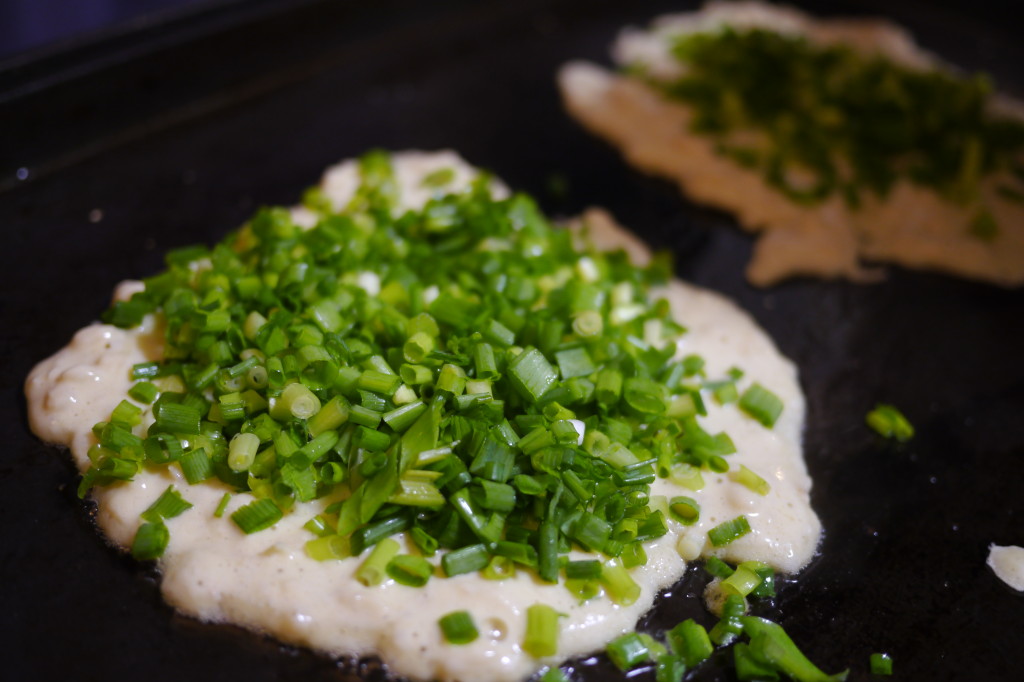 Add half of the chopped negi to each of the two portions
Add half of the chopped negi to each of the two portions
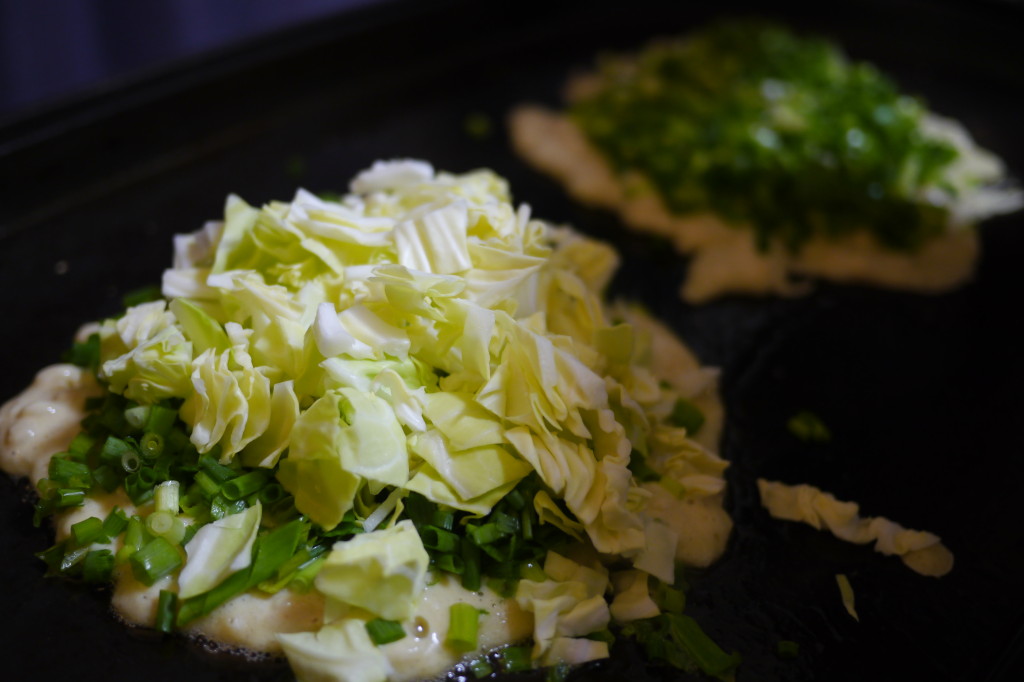 Next, pile on the cabbage. In restaurants, you can find this piled high with cabbage and soba noodles
Next, pile on the cabbage. In restaurants, you can find this piled high with cabbage and soba noodles
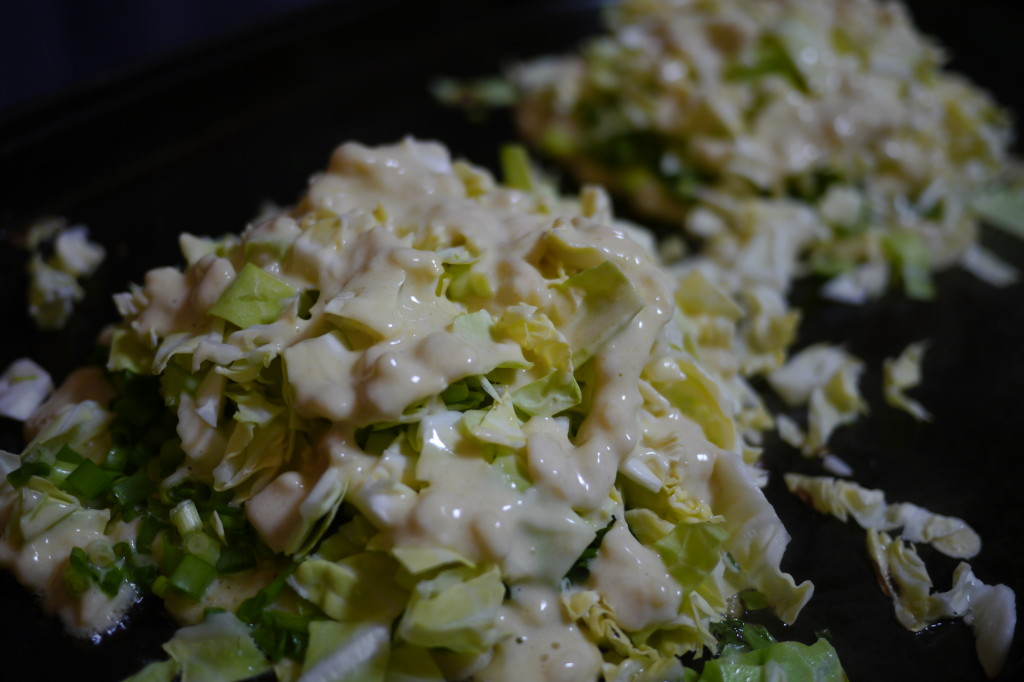 Add some more batter on top (You don’t need a lot here; it’s just to help it all stick together)
Add some more batter on top (You don’t need a lot here; it’s just to help it all stick together)
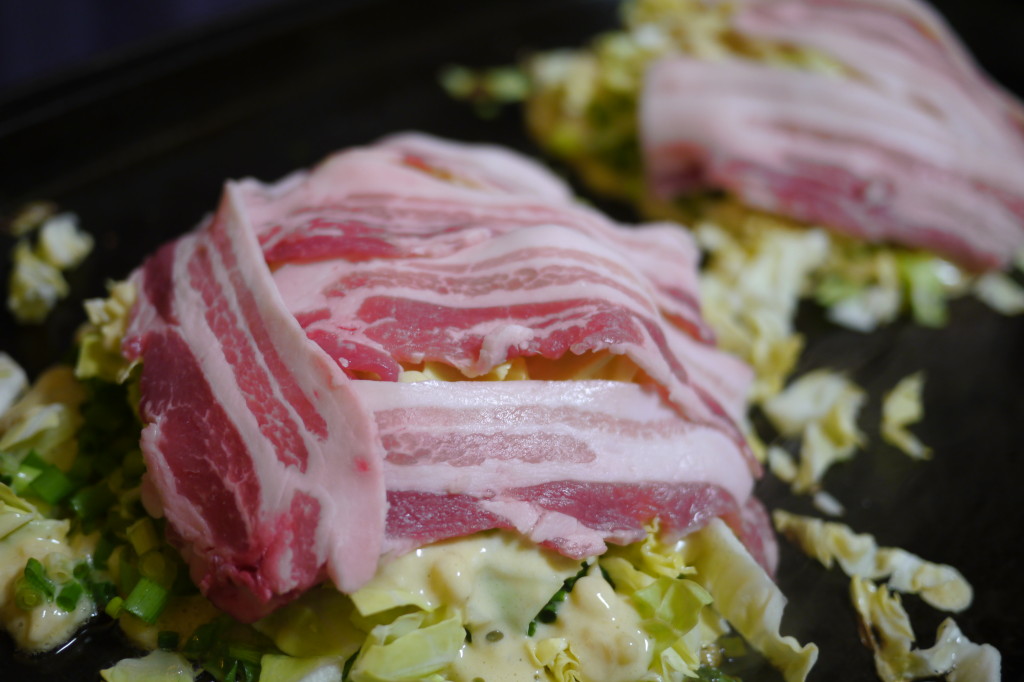 Lay out the thinly sliced meat on top. We are going to cook it so the meat shouldn’t be layered on top of each other but next to each other
Lay out the thinly sliced meat on top. We are going to cook it so the meat shouldn’t be layered on top of each other but next to each other
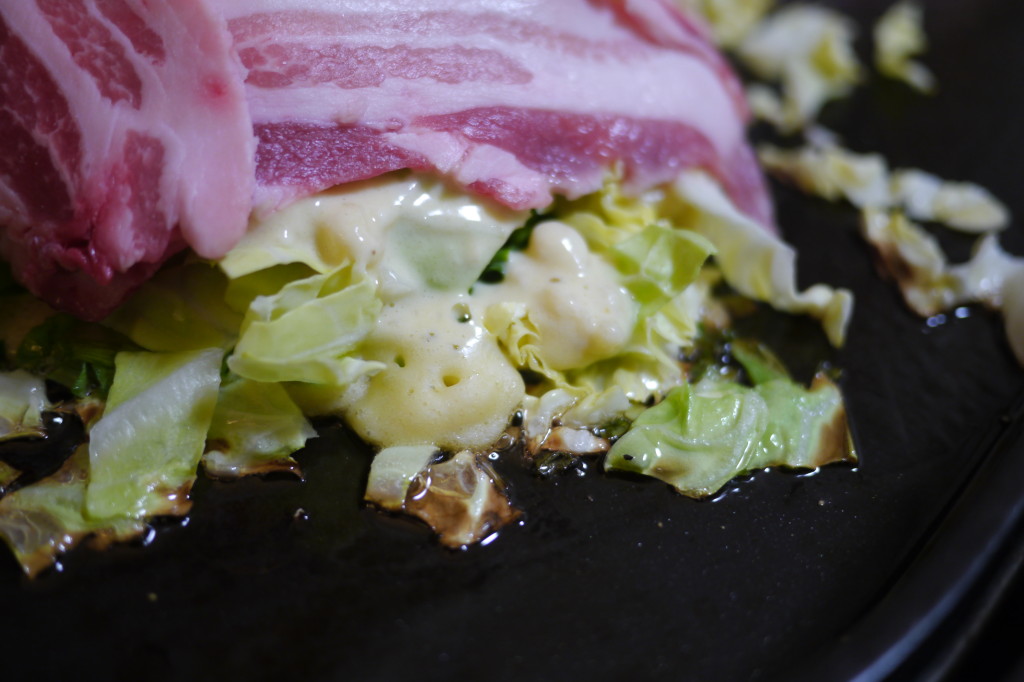 Once the bottom has cooked, we are ready to flip it over
Once the bottom has cooked, we are ready to flip it over
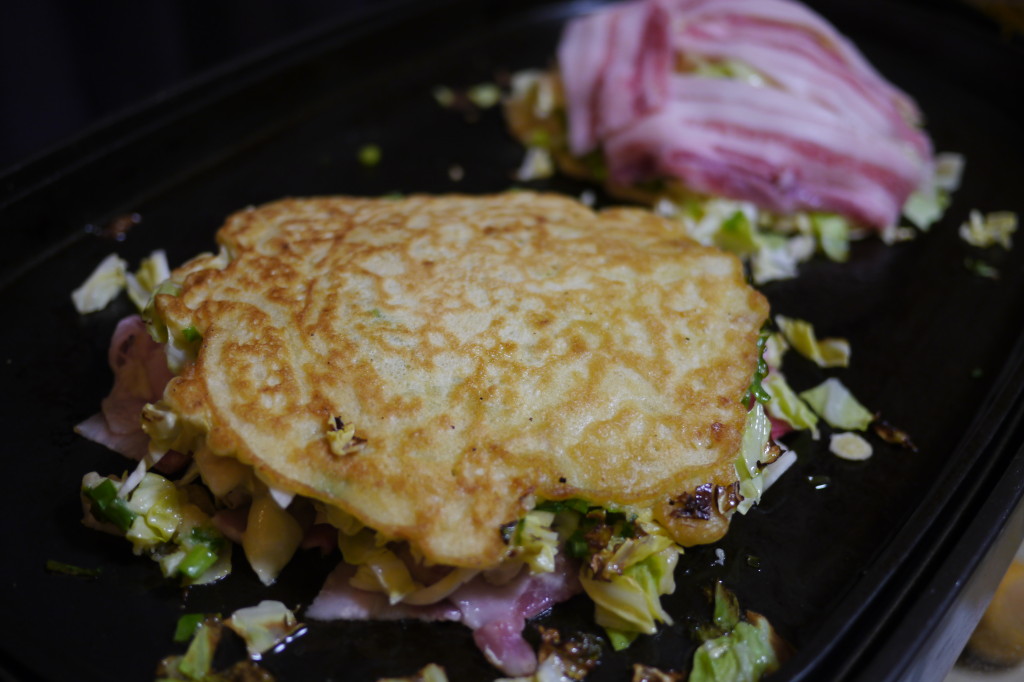 When you flip it over, it should be a nice golden brown
When you flip it over, it should be a nice golden brown
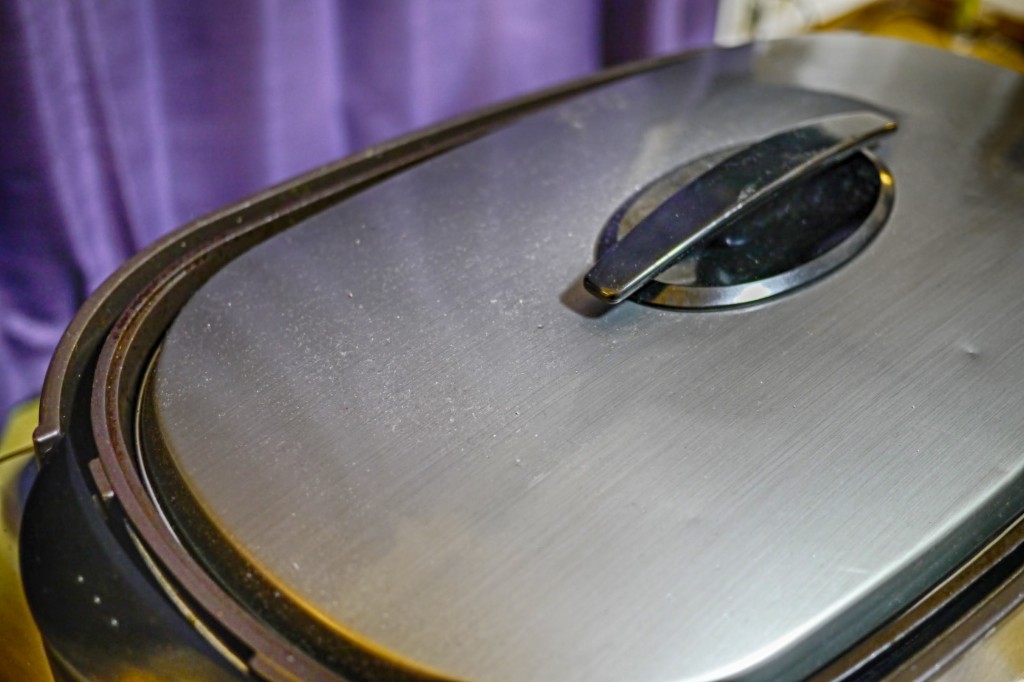 Cover and continue to cook for 5-10 minutes
Cover and continue to cook for 5-10 minutes
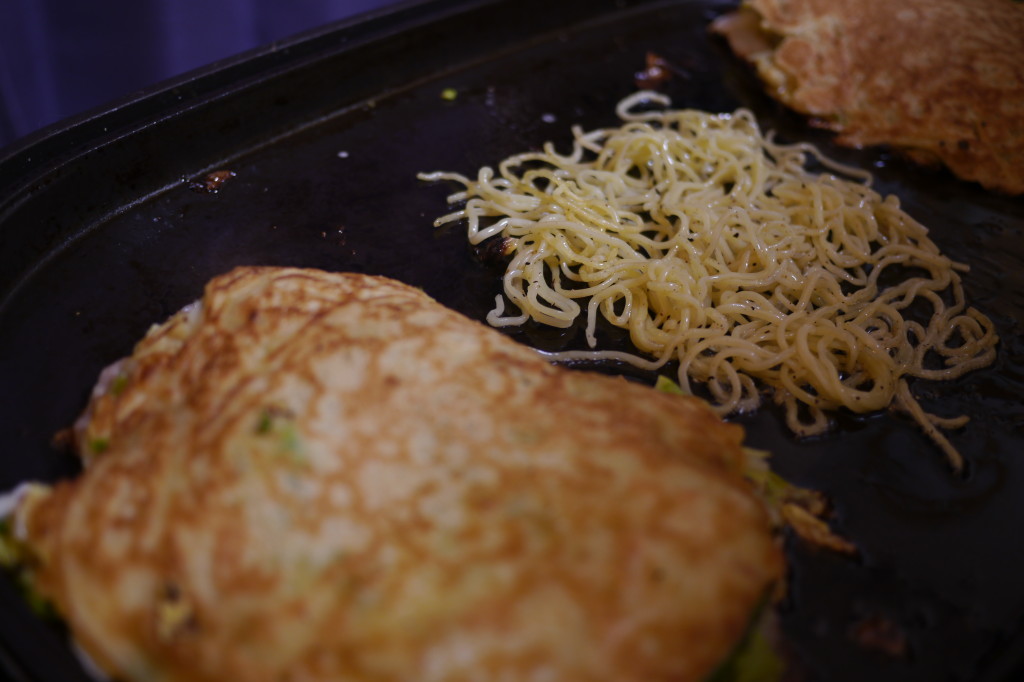 Remove the cover, make some space and put each portion of the soba noodles back on the grill/pan. Spread it out to be about the same size as the okonomiyaki
Remove the cover, make some space and put each portion of the soba noodles back on the grill/pan. Spread it out to be about the same size as the okonomiyaki
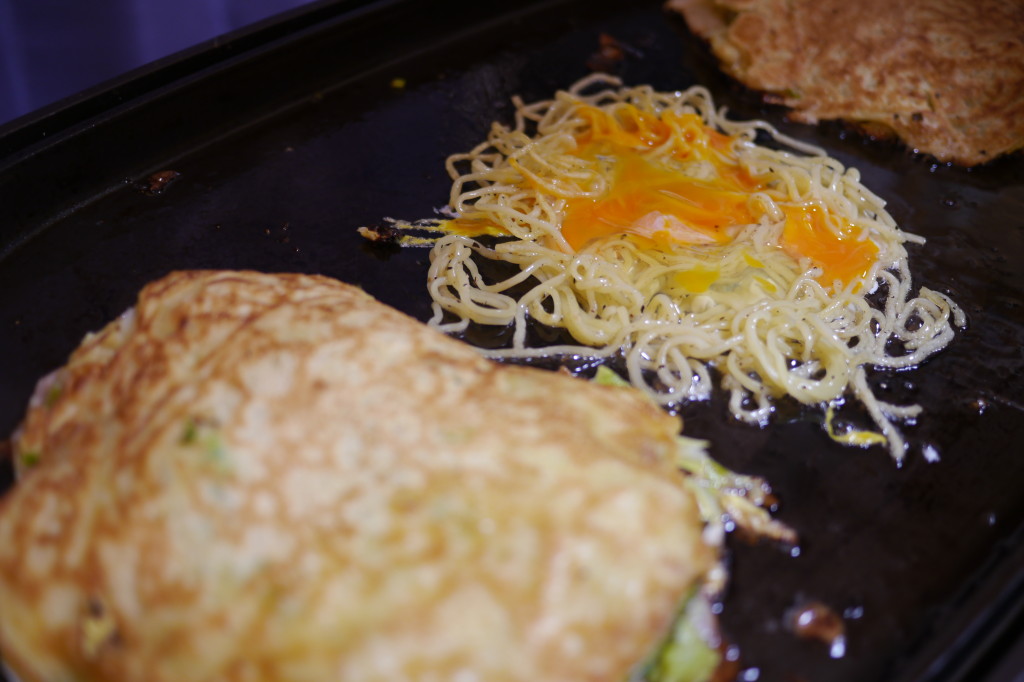 Add an egg to each portion of soba noodles, break the yolk, and spread it around
Add an egg to each portion of soba noodles, break the yolk, and spread it around
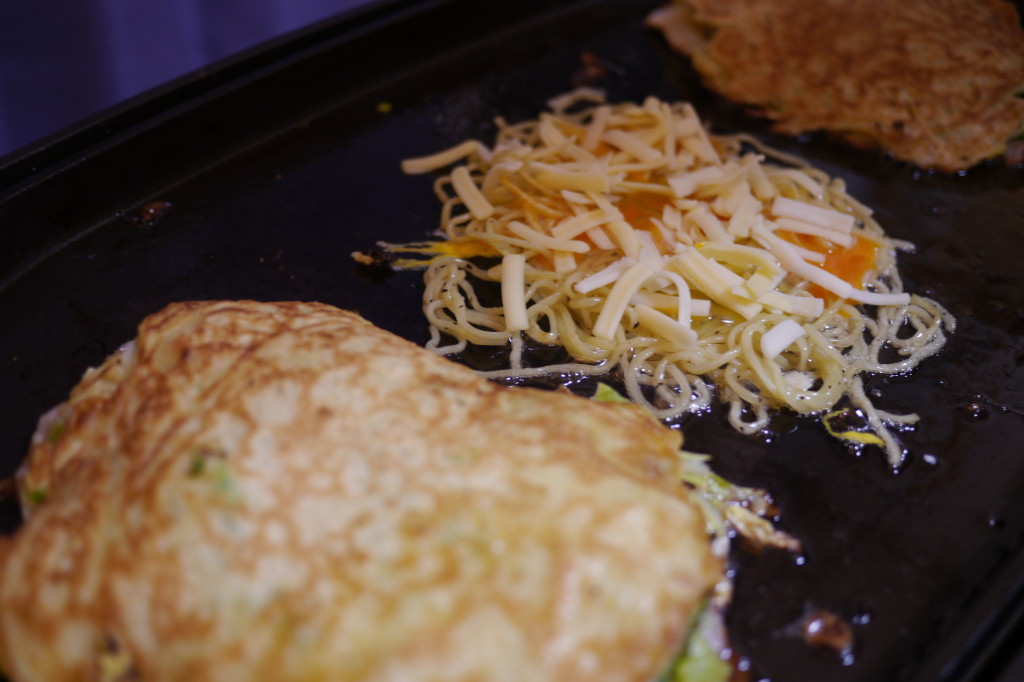 Add this stage, I optionally added cheese. You could add other topping here such as katsuoboshi bonito flakes
Add this stage, I optionally added cheese. You could add other topping here such as katsuoboshi bonito flakes
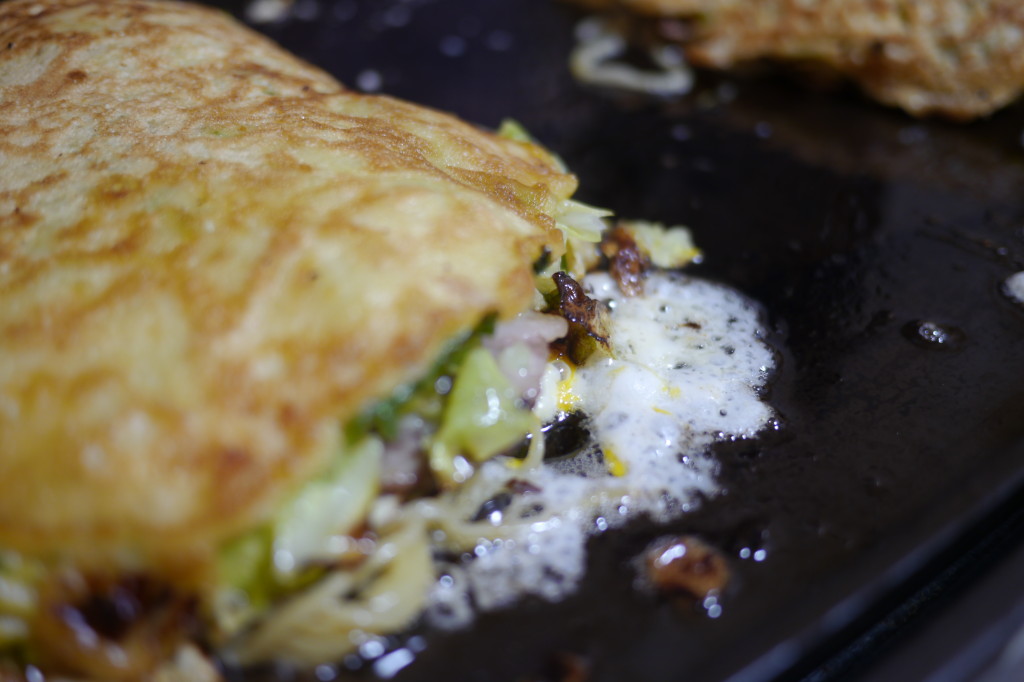 Move the okonomiyaki onto the egg/soba and continue to cook
Move the okonomiyaki onto the egg/soba and continue to cook
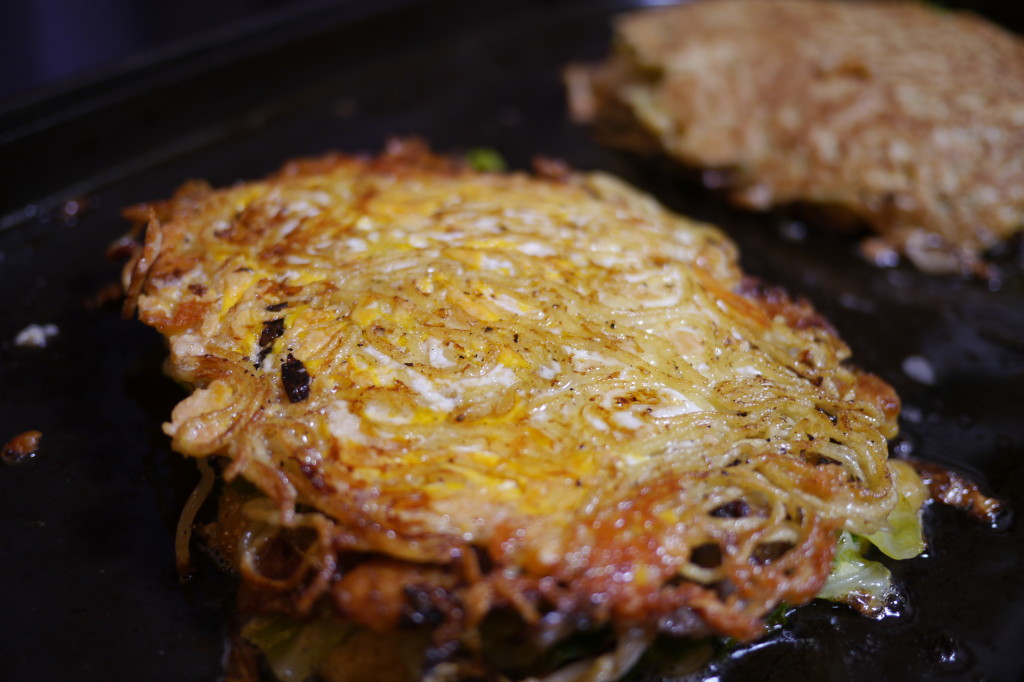 Once it has cooked, flip it over
Once it has cooked, flip it over
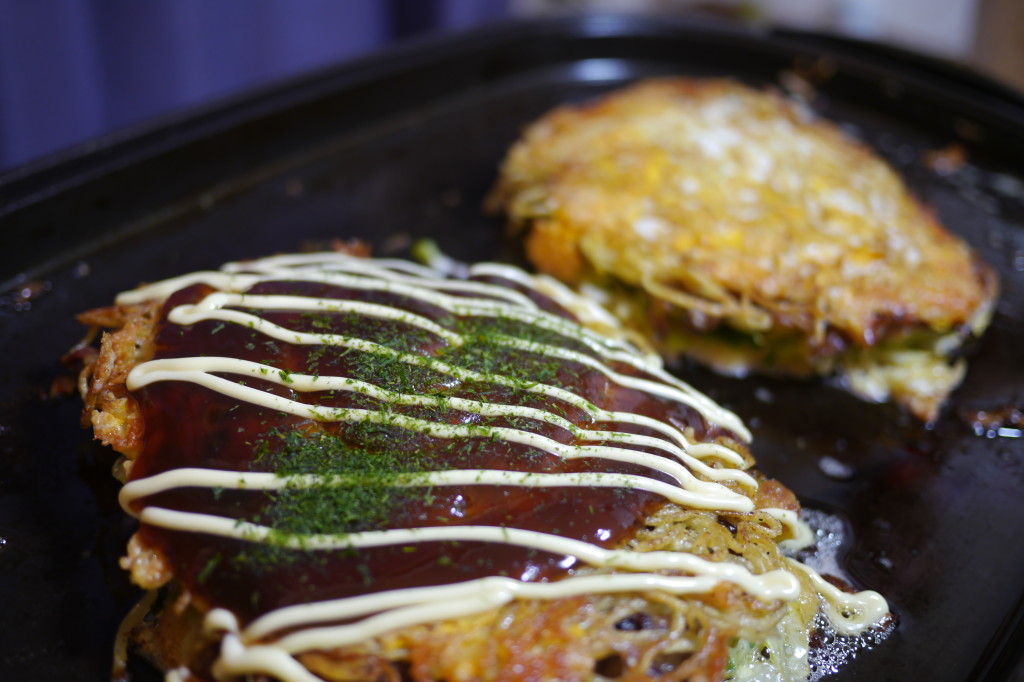 Add Nori seaweed for seasoning. Many people also like to add katsuoboshi bonito flakes here as a topping because the heat makes it move around like it’s alive
Add Nori seaweed for seasoning. Many people also like to add katsuoboshi bonito flakes here as a topping because the heat makes it move around like it’s alive
You can slices this into 4 pieces and serve
